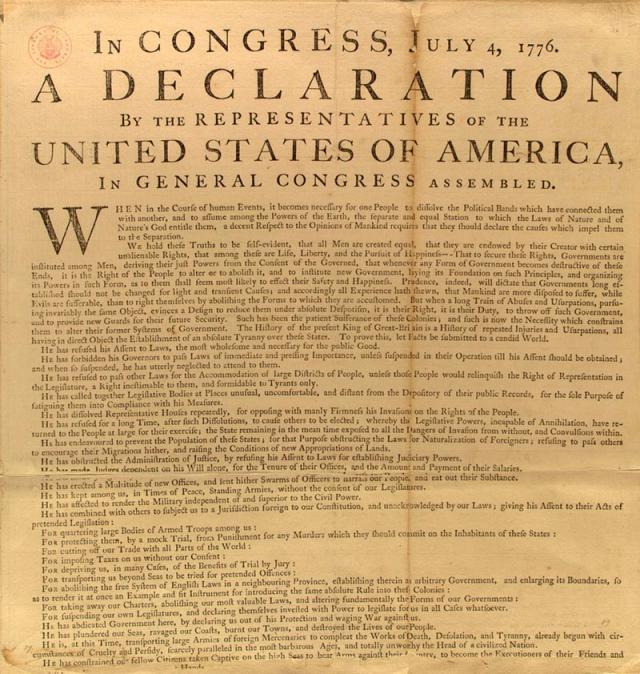“Anything is possible if you have enough nerve.” J.K. Rowling
July 4, 1776 – Philadelphia, Pennsylvania: After much debate, the Second Continental Congress had finally agreed upon the final draft of the Declaration of Independence. The atmosphere in the room was solemn. Declaring independence from England, the most powerful nation in the world, was treason and punishable by death.
Congress ordered the declaration printed and distributed to the 13 states. During the next few weeks, it was reprinted in newspapers up and down the Atlantic seaboard. Later that month, Congress ordered the declaration to be written out on parchment for the delegates to sign and on August 2, the Congress members signed their names to the document. Benjamin Franklin voiced what many delegates felt: “Gentlemen, we must, indeed, all hang together, or most assuredly, we shall all hang separately.”
As the war for independence from England continued into the fall of 1776, George Washington’s continental army lost four battles. On December 20, when British forces chased Washington out of New Jersey, a frightened Continental Congress packed up the Declaration of Independence and fled Philadelphia for Baltimore.
The situation was bleak. However, on Christmas Eve, Washington crossed the icy Delaware River and defeated a garrison of 1,500 Hessian mercenaries at Trenton, New Jersey. A week later, the Continental Army outmaneuvered and defeated a redcoat army to capture Princeton 15 miles away.
The two victories helped change the tide of the war. Emboldened by Washington’s victories, in January 1777 Congress voted to have the Declaration of Independence reprinted. They agreed that the names of the signees would be made public for the first time.
For this printing, Congress turned to M.K. Goddard, one of the Revolutionary War’s most prominent printers whose business was located on Market Street in Baltimore, a few blocks away from where Congress was housed. M.K Goddard owned a printing business, managed a bookstore, was postmaster, and published a revolutionary newspaper, the Maryland Journal. The weekly paper provided war news while promoting the patriot cause and took every opportunity to criticize British soldiers for their brutality.
Goddard, who came from a family of printers, had a father and brother who were also in the newspaper business. After managing the Pennsylvania Chronicle in Philadelphia, Goddard moved to Baltimore in 1774 to take over the family business. The 36-year-old publisher understood the possible consequences of agreeing to print the Declaration of Independence. The M.K. Goddard print stamp on the treasonous document could implicate both Goddard and the business.
On January 18, 1777, M.K. Goddard reprinted the Declaration of Independence and helped the Continental Congress send copies to each state. The signatures of the signers were there for all to see. At the bottom of the single-page document, beneath the signatures of Thomas Jefferson, Benjamin Franklin and other notable members of Congress was printed, “Baltimore in Maryland: Printed by Mary Katherine Goddard.”
Since taking over the Maryland Journal three years earlier, Mary Katherine had chosen to identify herself as ‘M. K.’ because some took exception to a woman, especially a bold outspoken one managing a successful newspaper and printing business. Twice her business was raided, and once a radical group threatened to run her out of Maryland. She appealed the threat to the state government, which protected her.
By voluntarily placing her full name at the bottom of the document, Mary Katherine Goddard became a defacto signer of the Declaration of Independence. She wanted it to be known by all that she passionately supported the revolutionary cause and wanted her voice to be heard, regardless of the ramifications.
Of the 56 Americans who pledged their lives by signing the Declaration of Independence, nine were killed during the war, five were captured and tortured to death, the houses of 12 signers were burned and 17 lost everything they owned.
Mary Katherine Goddard operated her bookstore and remained one of Baltimore’s most prominent citizens until her death in 1816 at age 78. The little-known patriot’s boldness and daring helped forge a new nation. A copy of her edition of the Declaration of Independence can be found in the Maryland Hall of Records.

Very inspirational story. Very brave people. Thanks Pete.